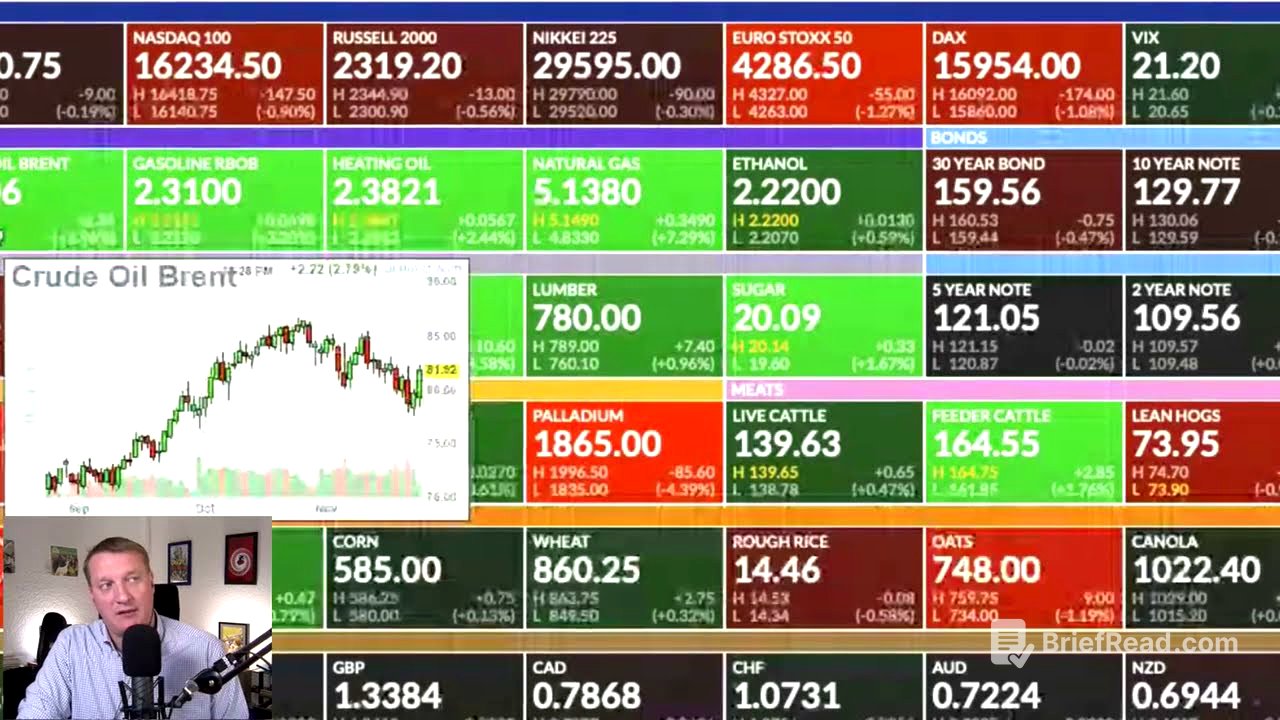TLDR;
This video provides a 101-level overview of the oil markets, explaining the roles of futures contracts, hedgers, and speculators. It identifies the three primary oil benchmarks (WTI, Brent, and Dubai crude), discusses who the major buyers and sellers are, and explains the influence of OPEC and OPEC+ on global oil prices. The video also touches on the concept of energy independence versus self-sustainability and breaks down the three components of the energy sector: upstream, midstream, and downstream.
- Futures contracts are binding agreements, unlike options.
- Hedgers protect against price volatility, while speculators aim to profit from price movements.
- OPEC+ significantly influences global oil supply and prices.
- Energy security, rather than energy independence, is the key to meeting local demand.
- The energy sector comprises upstream (production), midstream (storage and transportation), and downstream (refining and processing).
Futures Contracts, Hedgers, and Speculators [0:27]
The oil markets operate in the futures market, where contracts are binding agreements, unlike options which grant the right but not the obligation to buy or sell. There are two primary types of participants in the oil market: hedgers and speculators. Hedgers, such as oil producers or companies needing fuel, use futures contracts to protect against volatile price movements. For example, an oil producer might sell futures contracts to lock in a price if they're concerned about a potential market downturn. Speculators, on the other hand, aim to profit from the potential price movement of oil at a later date.
Oil Benchmarks: WTI, Brent, and Dubai Crude [4:03]
There are three primary oil benchmarks in the world: West Texas Intermediate (WTI), Brent Crude, and Dubai Crude. WTI is the U.S. benchmark, priced in New York, and is known as a "sweet crude" due to its low sulfur content, making it easier to refine. Brent Crude, priced in the North Sea, serves as the global benchmark and has a higher sulfur content, requiring more refining. Dubai Crude is the benchmark for the Middle Eastern market. While WTI and Brent Crude dominate the market, Dubai Crude is becoming increasingly important, especially for the Indian and Chinese markets.
Major Buyers and Sellers of Crude Oil [6:54]
The United States is the largest consumer of crude oil, using 18.2 million barrels per day in 2020, while producing 11.3 million barrels per day. China is the second-largest consumer, using 12.7 million barrels per day, but their average consumer uses 50% less oil than the U.S. consumer. The United States is also technically the largest producer, followed by Saudi Arabia, Russia, and Canada. However, OPEC, the world's largest oil cartel with 13 member nations, plays a critical role in managing the production of its member states to maximize profitability.
OPEC and OPEC+ [8:06]
OPEC, founded in 1960, operates as a cartel, setting production targets for its member nations to reduce the amount of available oil on global markets and drive up prices. The United States dramatically increased its production in 2008 due to the shale revolution. OPEC then banded together with other nations to form OPEC+, which includes countries like Russia, Mexico, and Kazakhstan. Each of these countries has different break-even points and relies heavily on oil to finance their state governments and welfare programs, thus desiring higher oil prices.
Who Sets the Price of Oil? [11:26]
The price of oil is determined by various participants, including oil traders, refiners, producers, hedge funds, pension funds, and speculators. On the supply side, OPEC+ is the biggest driver, heavily influencing the price. On the demand side, the United States is a major player, but China is increasingly increasing its energy demand. China's growing influence and closer ties with Middle Eastern nations raise concerns about energy security for the United States.
Energy Independence vs. Self-Sustainability [12:19]
Energy independence is a political term referring to the idea that the United States can produce all the energy it needs without relying on other countries. The more accurate economic term is self-sustainability, which means producing enough energy to meet local demand. Energy security, the ability to reliably get energy to everyone in the nation, is more critical than energy independence. The U.S. refinery networks are primarily in the Southeast, while a significant portion of the population lives on the coasts, necessitating imports and complex transportation networks.
Components of the Energy Sector: Upstream, Midstream, and Downstream [15:02]
The energy sector comprises three main components: upstream, midstream, and downstream. Upstream companies, like Diamondback and EOG Resources, focus on energy exploration and production, pulling oil out of the ground and selling it. Midstream companies generate revenue through the storage and transportation of oil and gas, operating pipelines and storage facilities. Downstream companies refine and process crude oil into products like gasoline and plastics. These companies can be more speculative and may struggle when oil prices rise due to tighter margins.









